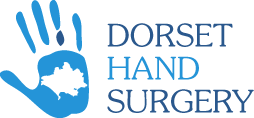Golfer’s Elbow
What is it?
Golfer’s elbow (or medial epicondylosis) is a degenerative condition affecting the common flexor origin. The condition tends to affect middle age men (i.e. 40-55 years of age). It is much less common than Tennis elbow. Less than 10% of affected patients are golfers.
Golfer’s elbow is thought to result from repetitive small tears to the tendon insertion onto the medial epicondyle. This leads to characteristic pain and tenderness over the medial part of the elbow with activities such as gripping and lifting. The pain can radiate down the forearm. Sometimes the patient will describe symptoms of pins and needles affecting the ulnar digits and medial aspect of the forearm. This is due to the ulnar nerve being irritated as it passes behind the medial epicondyle, close to the area of pathology.
Diagnosis
Provocative test: Resisted wrist flexion causes pain around the medial epicondyle. Resisted forearm pronation with the elbow extended may also exacerbate symptoms.
Differential Diagnosis
Elbow arthritis: degenerative changes can cause medial elbow pain. Crepitus may be felt on elbow movement.
Biceps tendinopathy: Resisted elbow flexion and supination are painful.
Neck or shoulder pathology with referred pain.
Investigations
Often clinical diagnosis.
Radiographs: AP/Lat of the elbow (to exclude other conditions such arthritis)
An MRI scan may also be requested to assess the soft tissues around the elbow in greater detail.
Nerve Conduction studies may be requested if signs of ulnar nerve irritation.
Treatment options
Here are available treatments for Golfer's Elbow:
Resting from activities that exacerbate the pain will often help to improve symptoms. Poor sporting technique can worsen symptoms. Advice regarding this from a sports coach or physiotherapist can be helpful. A short course (up to six weeks) of anti-inflammatory medication taken regularly has been shown to improve symptoms, albeit in the short term. Excellent benefit can be obtained from physiotherapy. The physiotherapist will use a combination of manual techniques, ultrasound and strengthening exercises (eccentric-based regimen). The use of splints/clasps and acupuncture may also derive benefit for some patients.
Injections:
Steroid injections
Injections for tennis elbow have been a topic of some discussion over the past few years. Traditionally injection of local anaesthetic and corticosteroid has been used with good benefit. Research has emerged suggesting that whilst these injections can improve symptoms for a while, they may make the pain come back worse than ever. We would therefore suggest that these injection be used sparingly now in the treatment of Golfer’s elbow.
Injection of blood products
The use of blood and blood derived products as an injection treatment for tennis elbow has been used for many years. Recent high profile sporting examples have focused media attention on this form of treatment. Autologous blood (2-3 mls) can be injected into the area of tennis elbow to provide benefit from symptoms. It is thought to deliver growth factors (such as PDGF, FDGF) directly to the area of tendon damage, promoting healing.
Platelet rich plasma (PRP) is made up from autologous blood that is placed into a centrifuge. This produces a concentrated solution containing a higher concentration of these growth factors. This can then be injected into the area of tendon damage to facilitate tendon healing. It has demonstrated promising results in the literature. This treatment is now available at Dorset Hand Surgery.
Shockwave therapy
This is a non-invasive technique which uses high energy focused sound waves onto the area of injury. This is thought to promote healing of the injured tendon insertion. This is highly effective at improving the symptoms of pain and discomfort.
Surgery
When to refer:
- If diagnosis is not clear.
- Failure of improvement with non-operative measures.
- Recurrence of symptoms following one steroid injection.
